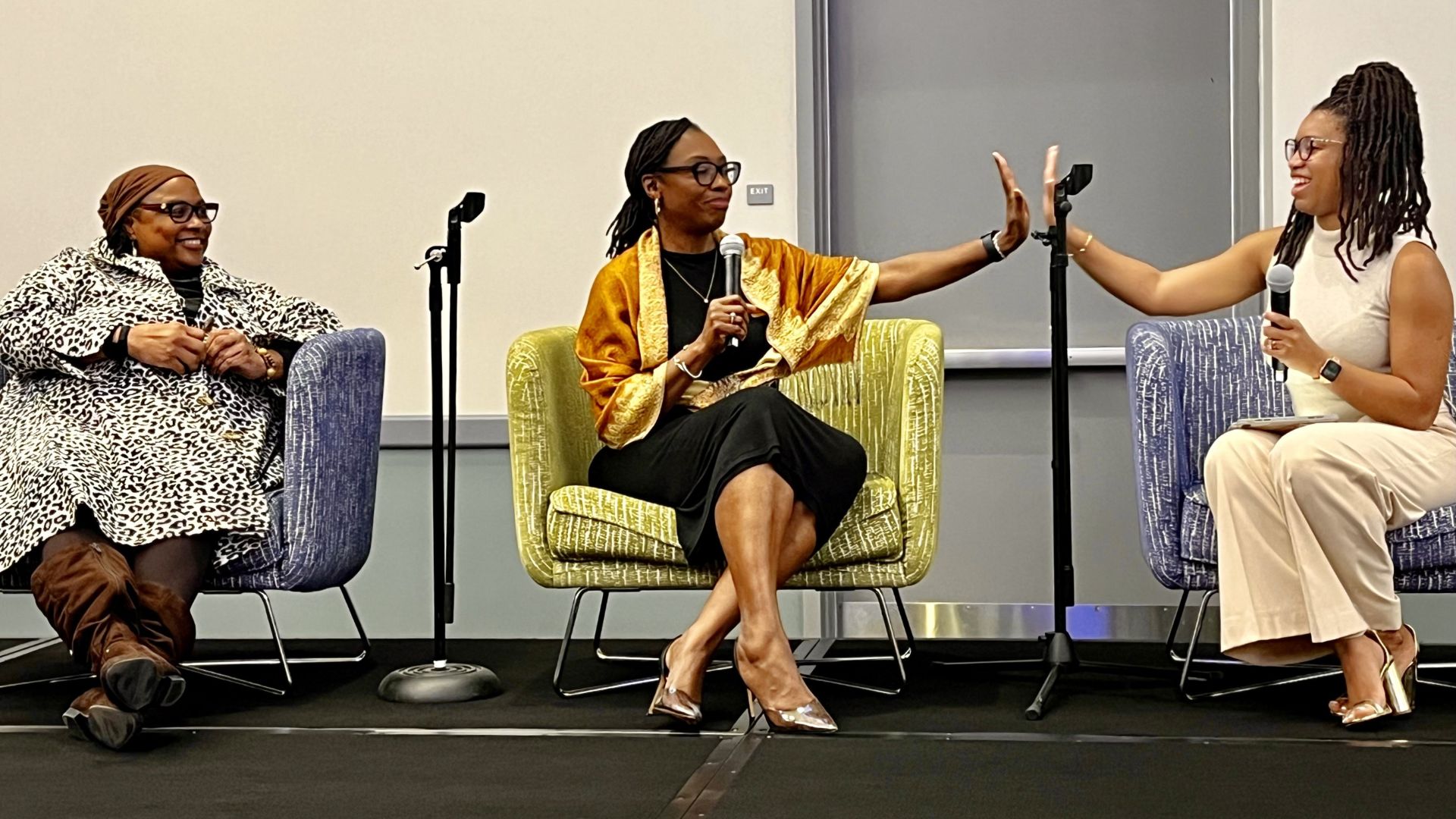Racism discussion highlights Black History Month

Shekinah Fashaw-Walters, right, and Vanessa Lopez-Littleton share a moment of agreement during a panel discussion on racism that was part of Black History Month. Kamilah Majied, left, also participated in the discussion. | Photo by Mark Muckenfuss
February 23, 2024
By Mark Muckenfuss
A new framework for dealing with racism in the United States is needed, Shekinah Fashaw-Walters told a crowded ballroom in Cal State Monterey Bay’s Otter Student Union Thursday evening, Feb. 22.
An assistant professor of Health Policy and Management at the University of Minnesota School of Public Health, Fashaw-Walters’ talk was part of CSUMB’s recognition of Black History Month.
Vanessa Lopez-Littleton, interim dean of the College of Health Sciences and Human Services, organized the event. Fashaw-Walters was one of Lopez-Littleton’s students when the latter was teaching at the University of Central Florida.
Fashaw-Walters spent much of her time using the analogy of a garden to illustrate systemic racism. In her story, a gardener decides to plant red and pink flowers along the pathway of a garden, red on one side – where the ground happens to be fertile – and pink on the other – where the soil is rocky and inhospitable. The gardener prefers the red flowers over the pink. As they flourish and as the pink flowers struggle to survive, it only strengthens her convictions that the red flowers are better. If any seeds happen to sprout pink flowers among the beds of red blossoms, they are pulled out.
Eventually, the external discrimination is internalized, Fashaw-Walters said. The pink flowers see themselves as inferior. When bees come to pollinate the garden, the pink flowers try to change their lot.
“Stop!” Fashaw-Walters said the pink flowers tell the bees. “Don’t give me any of that pink flower pollen. I want the red flower pollen.”
She identified three different mechanisms for trying to deal with racism: race-neutral, race-based and race-conscious frameworks. The first of these attempts to ignore race as a factor in making policy. Race-based practices try to level the playing field largely through numbers – such as race-based college admissions. A race-conscious framework aims to take into account all of the factors inherent in a systemically racist system – such as the garden example – and adjust policies to account for that.
“We can destroy the tools of racism by dismantling the ways in which racism operates,” she said. “We need to acknowledge there are biases in the knowledge we produce.”
Using a race-conscious framework requires three main actions, Fashaw-Walters told the crowd:
- Identify the inequity,
- Dissect the policy mechanisms, and
- Elucidate the role of racism.
Those steps require more than addressing the obvious, she said.
“The things we thought were things of the past are still there under the surface and are reinforced by these structures,” she said. “What lies below the surface is so much more important.”
Following her talk, Fashaw-Walters was joined by Lopez-Littleton and CSUMB social work professor Kamilah Majied for a panel discussion.
“These are important issues,” Lopez-Littleton said near the end of the evening. “And now, particularly with the declining Black population (in the region and at CSUMB), it’s important to keep these issues at the forefront.”
Majied said changes in the system will take a shared effort.
“It’s the water we are all swimming in,” she said of the problem of racism. “We have the responsibility to clean the water we’re all living in, and we can. It’s empowering.”
Fashaw-Walters said she also remains hopeful.
“Folks are using the framework,” she said. “Folks are teaching this in their classes.
“I’m hoping to see change. I’m wanting to see things heading in a new direction. I give talks like this, and someone says, ‘I never thought of that,’ or ‘I’m going to change that.’ And that keeps me going.”